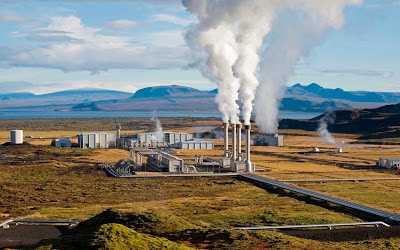What is Geothermal Energy?
Geothermal energy also includes exploitation and exploitation of these geothermal resources or sources and their direct or indirect routes to geothermal energy. Geothermal energy is a kind of energy that is new, renewable, sustainable, inexhaustible, cheap, reliable, environmentally friendly, native and green friendly.
With geothermal resources;
1 – Production of drinking water (mineral water etc.) containing minerals,
2 – Central heating, central cooling, greenhouse heating etc. Heating / cooling applications,
3 – The use of hot springs in thermal tourism,
4 – Production of chemical substances and minerals such as carbon dioxide, fertilizer, lithium, heavy water, hydrogen,
5 – The use of industrial heat treatments, such as drying processes,
6 – At low temperatures (up to 30 ° C) aquaculture,
7 – Electric energy production,
As well as in application and evaluation areas.
It is one of the most important features of being a renewable, sustainable and inexhaustible source of energy. It is a source of resources for countries that are considered to be productive and lucky in terms of geothermal energy and geothermal energy such as Turkey. Being clean energy and environment friendly; Have near zero emissions because combustion and burning technologies are not used; Offer ideal conditions and conditions for multi-purpose heating applications in agriculture, industrial, residential, greenhouse heating and similar areas; To be completely independent of meteorological conditions such as wind, rain and sun; Ready to use; Is much cheaper than fossil energy (see “fossil fuels, coal”) or other sources of energy (see “What is solar energy ?, What is wind energy?”); The exploration wells can be converted directly to production facilities and sometimes to re-injection sites; It is reliable because it does not carry material, spiritual and vital risk factors such as fire, explosion, poisoning; Provide more than 95% energy efficiency; Unlike the production of other types of energy (hydroelectric energy, solar energy, wind energy, fossil energy), the need for plant space is at a minimum in material terms; Import and export due to its local character are not influenced by factors such as international conjuncture, crises, wars; The ease of use in residential areas because it does not involve problematic transportation of diesel, coal, wood; For the same reasons.
Geothermal underground water reservoirs, which form rainwater, snow, sea, lake and magma waters by feeding porous and cracked rock masses underground, maintain renewable, usable and sustainable properties as long as underground and recharge conditions continue. They are not affected by short-term atmospheric conditions. Reinjection is a process in which the geothermal fluid is not thrown into the surroundings in the drilling production made from the geothermal reservoirs and it is sent back to the ground after the function is completed for the supply of the reservoir. Reinjection has been made mandatory in many countries by law.
The concept of geothermal energy production has been done in many countries many years ago, and there are many examples in this area. For example: Geothermal electricity is still being produced for 48 years in Larderello Village of Italy, from 1904 to the present day, and from the Geyser field in the State of California, USA.
There are many examples of geothermal energy use areas using a geothermal-based central heating system. For example: since 1934 in Idaho, Boise in Iceland, in Reykjavik, the capital of Iceland since 1890, as well as 85,000 residential geothermal-based central heating systems in the Parisian capital of France, and they are heated by this geothermal heating system .
